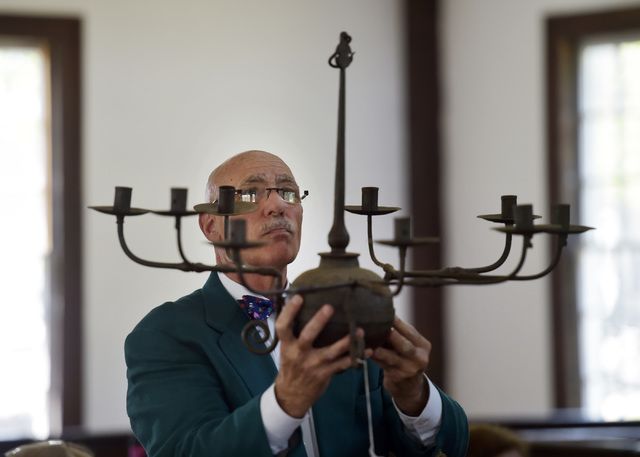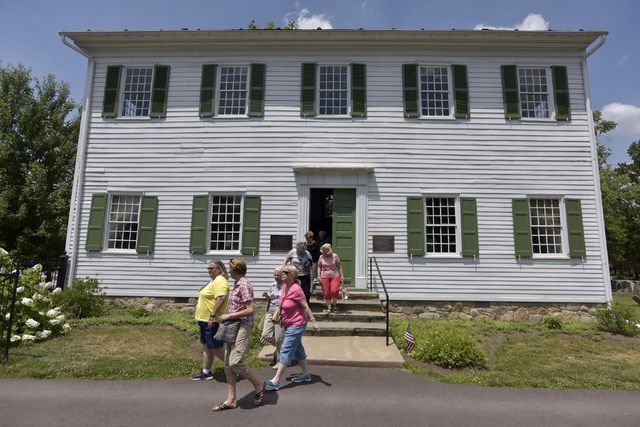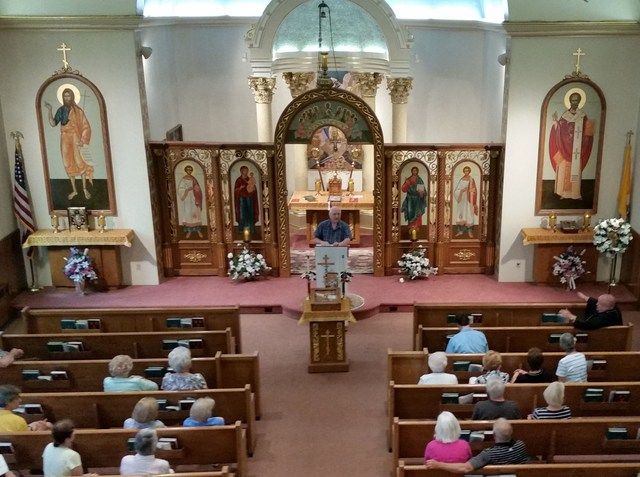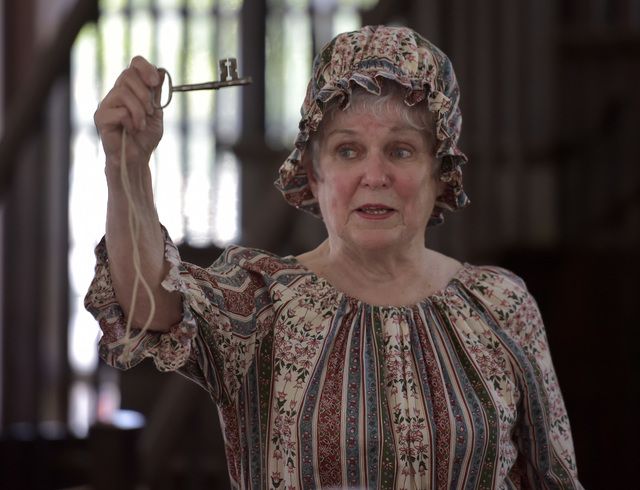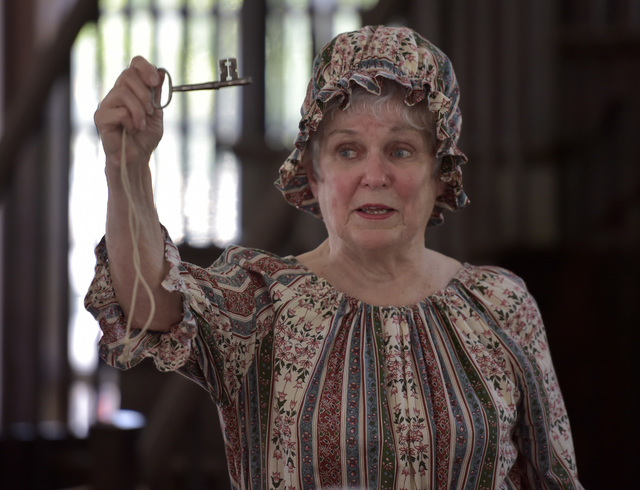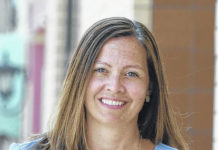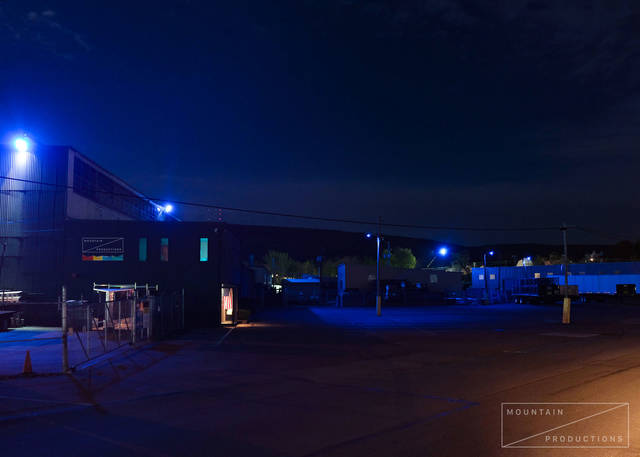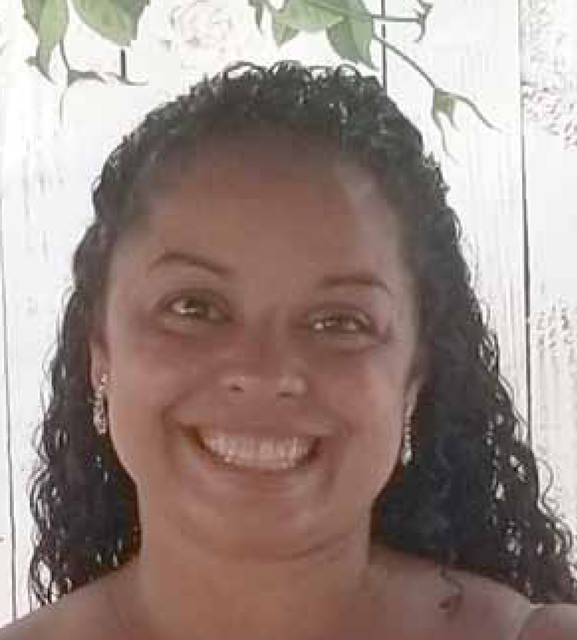FORTY FORT — The annual historic church tour, now in its 11th year, celebrated the historical, architectural and spiritual on Sunday, as attendees made their way through Forty Fort and Swoyersville visiting five churches.
Organizer Jan Lokuta emphasized both the similarities and differences of the churches, their historical meaning and their benefit to the community.
“When people came to this country, their churches highlighted the very best of their cultures,” he said. “They were bringing their beliefs, their traditions to this new world.”
The tour began at the Forty Fort Meeting House, as presenters in period-appropriate costumes gave attendees a look back in history.
Matt Schooley, president of the Forty Fort Cemetery Association, said the origins of the church and the settlement of the area had its roots in the courage and determination of a group of 40 people after which the town was named.
According to Schooley, the settlers, with a mandate from the Susquehanna Land Development Company, made their way through treacherous terrain in Connecticut and New York to get to the Wyoming Valley.
To early settlers, he said, a place to worship was a necessity.
The meeting house, completed in 1807, was successfully shared by Congregationalists and Methodists, which was, according to Schooley, no small feat.
He said a meeting house in Wilkes-Barre was marked by divisions of the congregation over such issues as decoration and use of space.
The meeting house was — and remains — very sparse in regard to decoration and furnishing — simply an auditorium and speaking area, with not even a cross placed on the wall.
Schooley said hundreds of such meeting houses were built in New England during that time in history.
Nancy Lychos, president of the Forty Fort Meeting House Preservation Committee, told attendees that the pews had never been painted, most of the windows were original and even an original offering plate remained near the altar.
She asked attendees to imagine themselves in the early 19th century, singing hymns and listening to a message that might have been hours long.
As attendees made their way through the tour, they were able to gain understanding of how churches have changed throughout history, going from the puritanical atmosphere of early churches to the decorative and ornate churches operating today.
At St. Elizabeth Ann Seton Roman Catholic in Swoyersville, Chris Calore shared the meaning of stained glass windows that surrounded attendees as they sat in the church’s sanctuary.
Light from outside brought to life depictions of Jesus, from his birth to his ministry to his death on the cross.
The church, which brought together three area congregations in 2012 during a consolidation of parishes, contains symbolic artwork from each parish.
Across town at St. Nicholas Byzantine Catholic Church, religious icons were not illuminated from the outside, but reflected inner light.
The Rev. Gary Mensinger, pastor at the parish, emphasized the symbolism of such simple acts of opening and shutting a door near the altar.
“St. Nicholas has been an ongoing church since 1926,” said Lokuta. “This is in contrast to the meeting house that ceased to function as a church in the 1840s.”
“Our church is a place of family,” said Mensinger. “Not a museum.”
The tour also took attendees through Forty Fort Presbyterian Church and Stella Presbyterian Church, both of which sprang from the meeting house and reflected a more traditional decor.
The Forty Fort United Methodist Church also offered attendees a time-tested tradition: refreshment.
“They have been kind enough to offer us punch and Welch cookies,” said Lokuta, emphasizing food as a part of the tradition and culture on which the tour focused.
